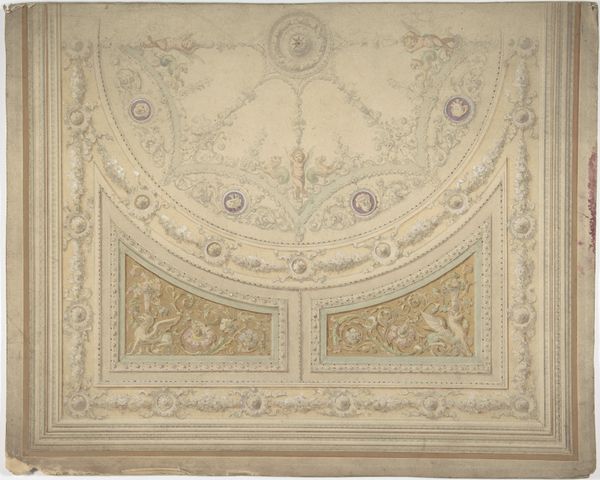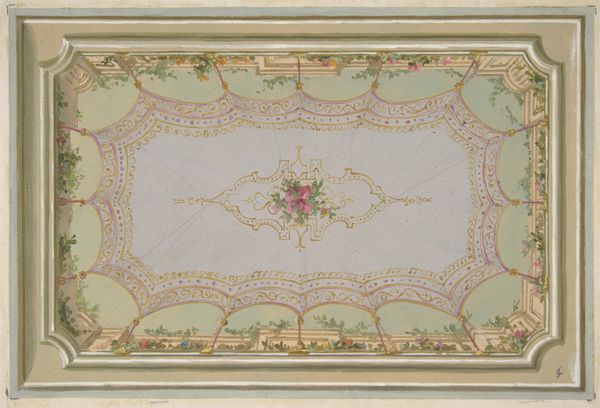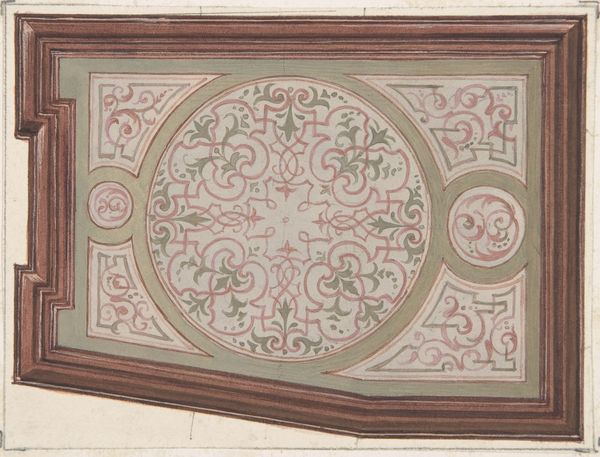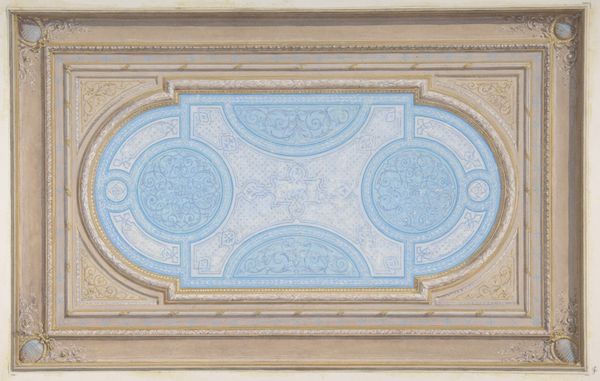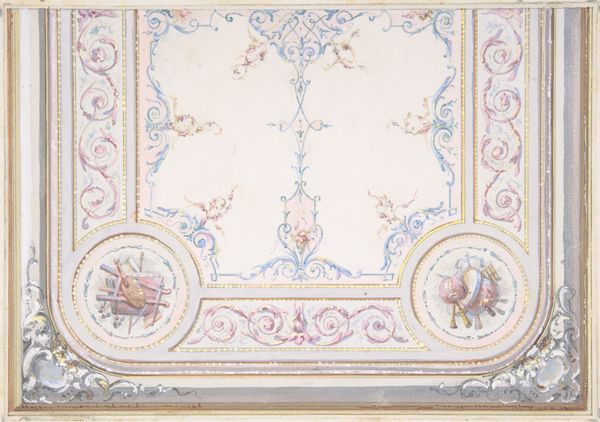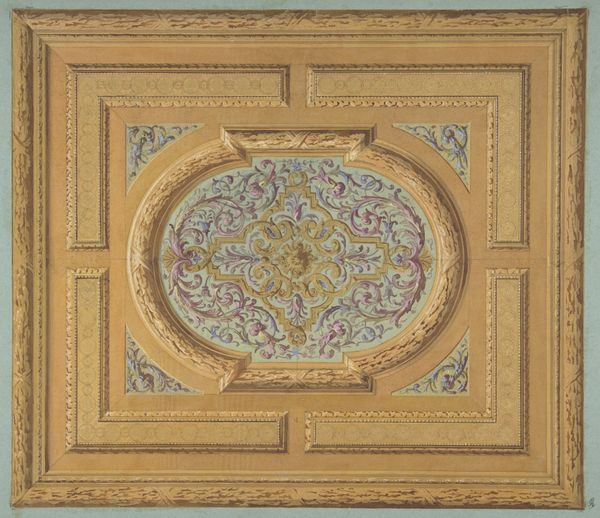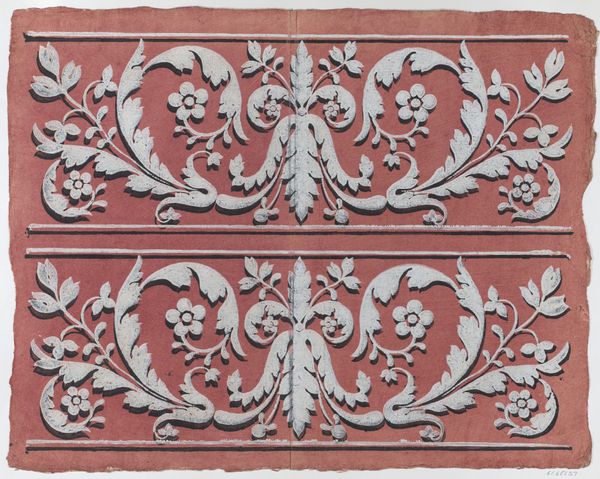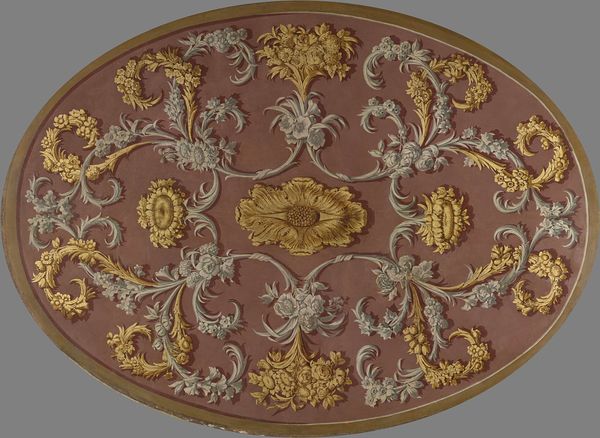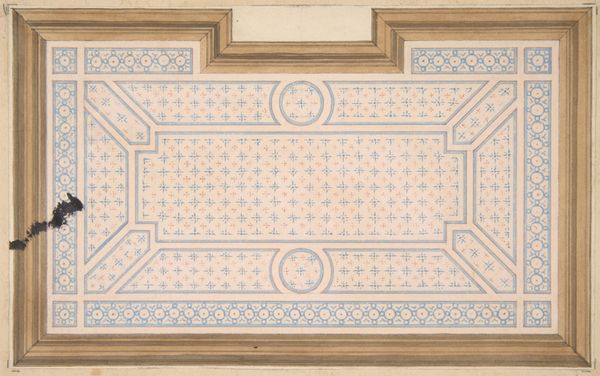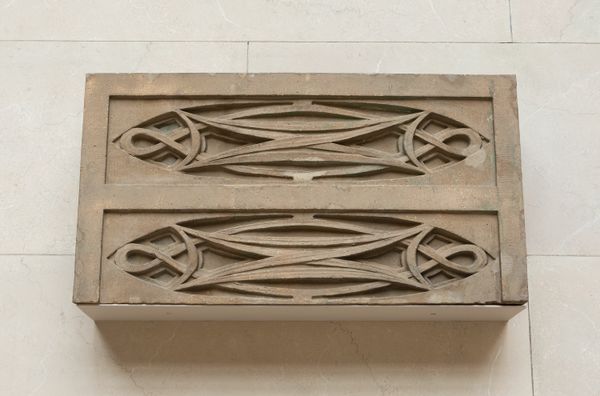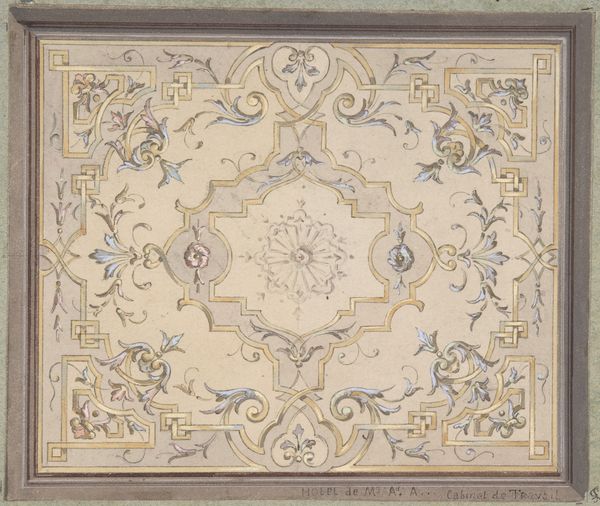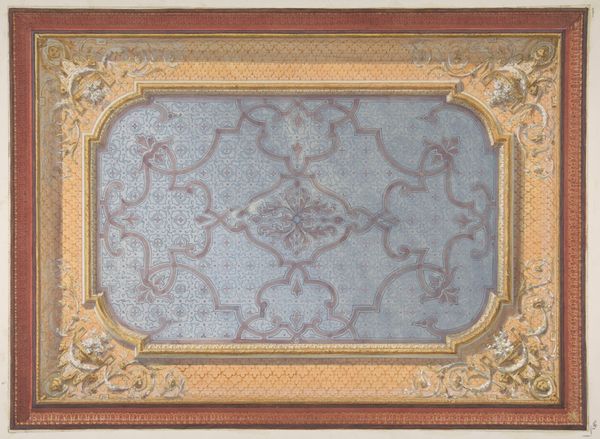
Woodwork and ceiling from the Tapestry Room from Croome Court 1755 - 1774
0:00
0:00
relief, plaster, architecture
#
neoclacissism
#
relief
#
geometric
#
plaster
#
architecture
#
rococo
Dimensions: Overall: 27 ft. 1 in. × 22 ft. 8 in. × 13 ft. 10 3/4 in. (825.5 × 690.9 × 423.5 cm)
Copyright: Public Domain
Robert Adam created this woodwork and ceiling for the Tapestry Room at Croome Court. It’s made primarily of wood and plaster. The effect of this decorative scheme depends on the contrast between the flat, pale surfaces and the three-dimensional ornament. The plasterwork is particularly striking; it seems almost weightless. But of course, such elaborate designs were only possible because of a highly organized building industry. Teams of joiners, plasterers, and painters would have been needed to execute Adam’s vision. While Adam is celebrated as a genius, it’s important to remember that his style was not just a matter of individual creativity. It was also the product of a specific social and economic system, one that allowed for the large-scale production of luxury goods. Understanding the labor and industry behind the design helps us appreciate both the ambition and the social context of this beautiful interior.
Comments
No comments
Be the first to comment and join the conversation on the ultimate creative platform.
